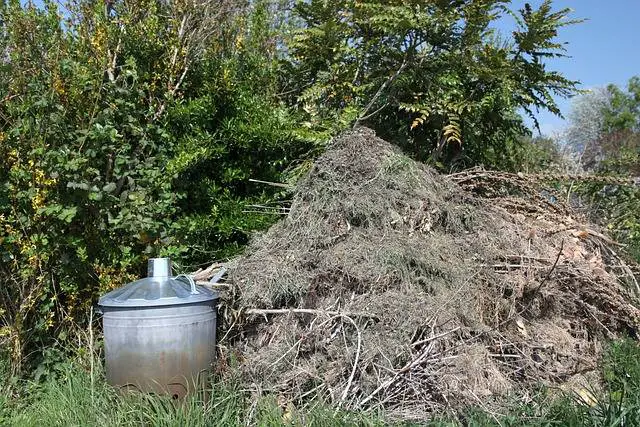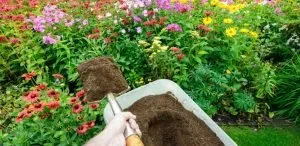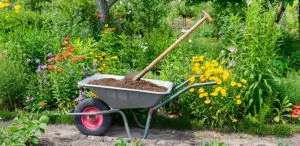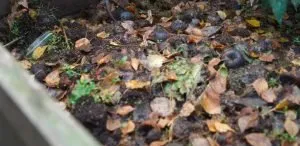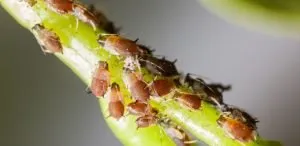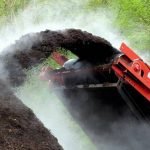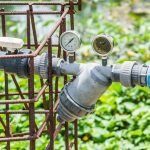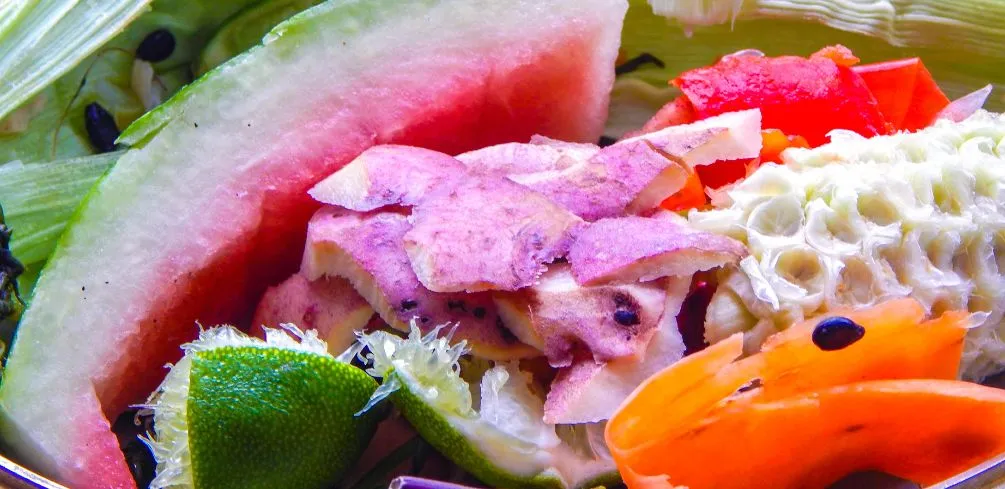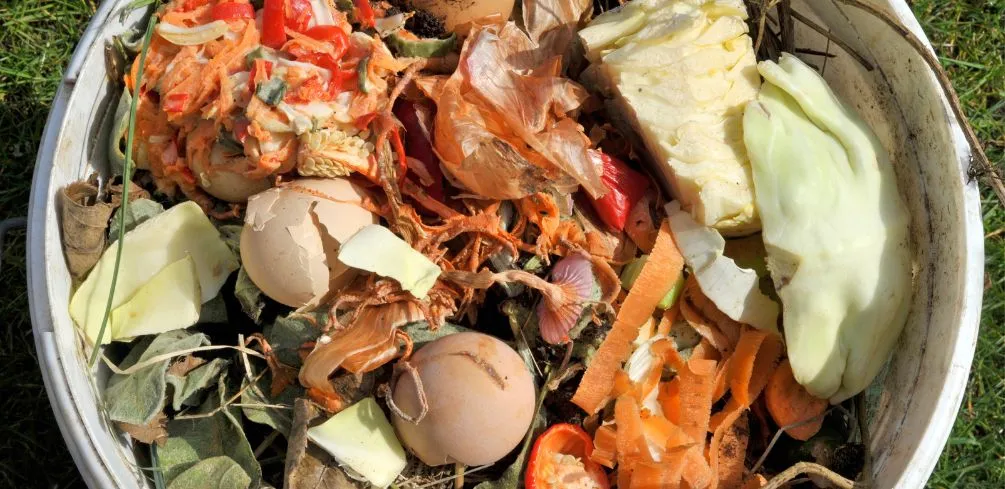With the rise in environmental awareness and a desire to live more sustainably, composting has become a popular activity. As people learn about composting, they often wonder what items can be used as fertilizers. This article provides an overview of what to compost and offers a list of surprising items that can be transformed into fertilizer.
Composting is the decomposition of organic material such as food scraps, yard clippings, and paper products. Composting helps to reduce waste sent to landfills while providing nutrients for soil and plants.
Compost is a rich source of nutrients for plants due to its high nitrogen content, which helps them grow healthy and strong. Additionally, it helps retain moisture in the soil and improves its texture by adding humus.
Being aware of what can be composted is essential for successful composting. Many common household items can be added to the compost pile, but some may surprise readers with their inclusion on the list of acceptable materials for composting. This article will provide an overview of what to compost and offer an extensive list of surprising items that can also be turned into fertilizer.
Definition Of Composting
Composting is a process that many may not be familiar with. It is the natural process of converting organic material into nutrient-rich fertilizer, and it has been practiced for centuries. Composting can take place in both rural and urban environments and is an essential part of maintaining healthy soil. To understand what composting is, one must first define its meaning.
Composting can be defined as the biological decomposition of organic matter under aerobic conditions. This decomposition occurs as microorganisms break down plant materials, such as leaves, grass clippings, and food scraps, into a nutrient-rich fertilizer commonly referred to as compost.
Microorganisms in the soil consume oxygen and release carbon dioxide during this breakdown process which provides a natural fertilizing effect for plants. The end product of composting is a dark, crumbly material that contains valuable nutrients such as nitrogen, phosphorus, potassium, and other trace elements essential for plant growth.
Composting is an important part of environmental stewardship as it reduces waste in landfills while also improving soil quality. Furthermore, it helps to reduce water pollution by keeping pollutants out of surface waters and groundwater systems.
By incorporating compost into soils on farms or gardens, farmers are able to use less chemical fertilizer while still ensuring healthy crops. Composting also promotes biodiversity by providing habitats for beneficial organisms like earthworms that contribute to healthy soils.
Overall, composting plays an important role in sustaining life on Earth by preserving the quality of our soils and reducing the amount of waste sent to landfills each year. It is an efficient way to recycle organic materials while providing numerous benefits to our environment and communities.
Benefits Of Composting
Composting provides numerous benefits to both the environment and gardeners alike. In addition to reducing waste that would otherwise be disposed of in a landfill, composting offers a variety of environmental advantages. Compost is a natural fertilizer that encourages increased plant growth and can even help to reduce water pollution.
When compost is added to soil, it helps to increase its fertility. The decomposed organic matter from the compost serves as a food source for beneficial microorganisms in the soil, which then helps plants to absorb more nutrients from their environment.
Compost also helps to improve soil structure, making it easier for roots to penetrate and retain moisture better.
Composted material also acts as an insulator for the soil, keeping it cool in the summer months and warm during cooler times of the year. This helps plants remain healthy by providing them with consistent temperatures throughout their growing cycle. Furthermore, organic material in compost can reduce soil erosion by helping it hold together better, preventing valuable topsoil from washing away due to heavy rains or winds.
The use of compost also reduces reliance on commercial fertilizers and pesticides, which are often made with chemical components that may have adverse effects on human health and the environment over time.
Instead of using these potentially harmful products on gardens and lawns, compost provides an all-natural solution that is safe for both people and pets alike while still providing excellent results in terms of increased plant growth and healthier soils.
Types Of Compostable Items
Composting is a great way to reduce waste and create nutritious fertilizers for plants. But did you know some items may surprise you as being compostable? Worm castings, coffee grounds, vegetable peels, banana peels, and eggshells can all be turned into nutrient-rich fertilizers.
First off, worm castings are the most popular form of composted material. This type of fertilizer is made from worm droppings that have been broken down by soil bacteria and microorganisms. Worm castings are full of essential nutrients like nitrogen and phosphorus, which help plants grow strong and healthy. Plus, it helps improve the overall structure of the soil, which improves drainage and aeration.
Next up are coffee grounds. Coffee grounds contain high amounts of nitrogen that can help promote plant growth when composted properly. They also contain other minerals such as phosphorous, potassium, calcium, magnesium, iron, zinc, and manganese, which can provide an extra boost to your garden or lawn. To maximize their benefits for plants, mix them with carbon-rich materials like leaves or wood chips before adding them to your compost bin.
Finally, come vegetable peels and banana peels, which add valuable nutrients to your compost pile when added in moderation. Both contain potassium and phosphorus, which are important for healthy plant growth but should be used sparingly since they can cause odors in the bin if overused.
Eggshells also make great additions to a compost pile since they contain calcium which helps protect plants against disease and pests. Just be sure to crush them first, so they break down faster in the soil!
Composting these items will not only help reduce waste but also create nutrient-rich fertilizer for your garden or lawn. So don’t forget to add worm castings, coffee grounds, vegetable peels, banana peels, and eggshells next time you’re making a compost pile!
How To Compost Effectively
In order to make composting an effective and rewarding experience, it is important to understand the right composting tips and techniques. It is essential to know what materials are suitable for composting, as well as how they should be treated during the composting process.
To begin, one should decide which type of composting method would be most suitable for their situation: either cold or hot. Cold composting involves simply piling organic material in a pile and allowing it to decompose over time, while hot composting requires actively managing the process by turning the pile regularly and adding water or air when needed.
Once a method has been chosen, one must then select the appropriate materials for composting. While many people are familiar with traditional items such as leaves and grass clippings, some surprising items can be used as part of a successful fertilizer. For example, coffee grounds, shredded paper products such as newspapers, eggshells, and even fruit peels can all be used in a compost pile.
After selecting the right materials for the job, it is important to pay attention to the details of the composting process. This includes ensuring that the mixture contains both “green” (nitrogen-rich) and “brown” (carbon-rich) materials in roughly equal proportions; maintaining adequate moisture levels; aerating regularly; and keeping temperatures within an optimal range throughout the process. Following these steps will ensure that one can reap maximum benefits from their compost pile once it is ready for use.
Ways To Use Compost
Composting is an effective way to use organic material to create a nutrient-rich fertilizer for use in gardens, landscapes, and other areas of the home. Composting can provide many benefits to the environment and to gardeners who want to add a sustainable element to their gardening practices. There are numerous composting techniques available, including traditional methods such as hot composting or cold composting, as well as more contemporary methods such as vermicomposting and bokashi composting.
The benefits of composting include improved soil fertility and increase water retention, which can help plants grow better by providing them with more access to essential nutrients. Compost can also be used to reduce weeds in gardens by allowing beneficial organisms such as earthworms, fungi, and bacteria to break down weed seeds before they have an opportunity to germinate.
Additionally, compost helps reduce waste by diverting organic materials from landfills, where they would otherwise contribute significantly to greenhouse gas emissions.
Compost recipes vary depending on the materials being composted but typically involve adding layers of green (nitrogen-rich) materials, such as grass clippings or vegetable scraps, along with brown (carbon-rich) materials, such as leaves or straw.
The ratio between green and brown materials should be approximately two parts browns: one part greens, though this may vary slightly depending on the material being used. Compost piles should also be kept moist but not too wet because damp conditions allow for the decomposition process that results in nutrient-rich fertilizer.
Once finished, the resulting product can be used in gardens or other outdoor spaces for a variety of purposes, including soil amendment and plant nutrition.
Frequently Asked Questions
How Long Does It Take For Compost To Break Down?
It takes time for compost to break down into nutrient-rich fertilizer, which is why it is important to know how long the process takes. On average, the composting process can take anywhere from two weeks to six months or even longer.
According to a study conducted by the University of California, the average composting duration is approximately three months. During this cycle, microbes inside the compost pile consume organic matter and convert it into nutrients that plants can use for growth.
The amount of time needed for a compost pile to decompose varies based on factors such as moisture levels, temperature, and size of the material being decomposed. If the conditions are optimal and all materials are properly managed, then the process will take much less time.
However, if these conditions are not ideal, then it could take much longer for a compost pile to break down completely. Additionally, certain materials take longer than others to decompose, such as animal-based products like meat and dairy, which should be avoided in compost piles due to potential health risks associated with their decomposition.
Composting can be an effective way of reducing waste while also providing essential nutrients for plants and soil health. Knowing how long it takes for a compost pile to fully decompose can help gardeners plan out their gardening schedule and ensure they have enough nutrient-rich fertilizer ready when they need it most.
With proper management and maintenance, gardeners can make sure their soil has all the necessary ingredients needed for healthy plant growth!
Can Compost Be Used Indoors?
Composting indoors is becoming increasingly popular as people become more environmentally conscious. While many are familiar with the traditional outdoor composting process, indoor composting offers a space-saving alternative for those who want to reduce their waste and create nutrient-rich fertilizers for their home gardens.
Indoor composting can be done in a variety of ways, including using composting containers, bins, and tumblers.
Indoor composting requires more frequent turning than its outdoor counterpart due to the lack of air circulation in an enclosed container or bin. Microorganisms that break down the waste need oxygen to survive, and when deprived of this oxygen, decomposition slows down significantly.
Turning the compost regularly helps aerate it so that the microorganisms can do their job properly and break down the materials faster. Some composters even use fans to help circulate air into their bins.
In order to keep your indoor compost healthy, there are a few things you should keep in mind. The temperature of your bin should remain between 40°F (4°C) and 110°F (43°C). Additionally, your bin needs to stay moist but not overly damp, as too much moisture will cause bacterial growth, which can lead to unpleasant odors.
Lastly, it’s important to make sure your bin has a good balance of nitrogen-rich materials, such as grass clippings and fruit peels, along with carbon-rich materials, like leaves and newspapers, in order for proper decomposition to take place.
With these tips in mind, you can successfully create nutrient-rich fertilizer from items you would’ve otherwise thrown away while helping protect our environment at the same time.
How Often Should Compost Be Turned Or Stirred?
Composting is an effective way to recycle organic matter and turn it into fertilizer for plants. However, managing compost requires a certain level of frequency to ensure that the composting process is successful. In particular, turning or stirring the compost at regular intervals is essential to aerate the material and help speed up the decomposition process.
To begin with, stirring compost should be done frequently. Depending on the climate and size of the compost pile, stir or turn it anywhere from once a week to once every two weeks in order to ensure that oxygen can reach all areas of the pile.
Additionally, when turning or stirring the compost, it is important to mix materials from different parts of the pile together in order to ensure even decomposition throughout. This allows beneficial bacteria and fungi to move freely throughout the entire pile while breaking down any large chunks of organic matter left behind in previous turns or stirs.
Ultimately, turning or stirring compost at regular intervals is key for proper compost management. Regularly mixing organic material helps to speed up decomposition as well as improve soil fertility by allowing beneficial microorganisms into all areas of the pile.
The frequency at which one should turn or stir their compost will vary depending on the climate and size of their pile; however, one should strive for a minimum frequency of once per week in order to get maximum benefits from their composting efforts.
Can Compost Be Used On Any Type Of Plant?
Composting plants is a great way to create nutrient-rich fertilizer for use in gardens, flower beds, and other areas of the landscape. It can be used on any type of plant, from annuals to perennials, trees, and shrubs. But what types of compost are available, and what are the benefits of using it?
There are several types of compost that can be used to fertilize plants. Manure from cows, horses, and pigs is a popular form of compost. Plant materials such as leaves, grass clippings, and fruit or vegetable scraps can also be composted. These materials break down over time into a rich soil amendment that helps improve soil structure, add essential nutrients and increase water retention capacity.
Using compost as a fertilizer has many benefits:
- Adds essential nutrients back into the soil
- Improves soil structure by increasing water retention capacity
- Stimulates beneficial microorganisms in the soil
These factors help ensure that plants receive the nutrition they need to thrive in any environment. Compost also helps reduce pests naturally by providing an environment that is inhospitable for pests such as weeds and insects.
In addition to its use as a fertilizer, compost can also improve the look of your landscape by adding organic matter, which improves soil drainage and aeration while helping retain moisture deep in the ground.
This helps create healthy soils that support healthy plants with vibrant blooms and lush foliage year-round! Composting is an easy way to make your garden more beautiful while giving back to nature at the same time.
What Is The Ideal Temperature For Composting?
Composting is the practice of using organic material to create a nutrient-rich fertilizer for plants. To ensure the composting process works efficiently, it’s important to maintain an ideal temperature. This temperature range differs depending on the type of composting being done. Compost heating and cooling can be achieved by managing the amount of air, water, and food waste in the compost pile.
The ideal temperature for composting is between 113°F (45°C) and 160°F (71°C). This range of temperatures is known as thermophilic composting, meaning that the compost pile will heat up to these temperatures due to microbial activity. When temperatures reach this range, microbes break down organic matter quickly and efficiently into a nutrient-rich fertilizer that can be used on any kind of plant.
To maintain thermophilic temperatures within your compost pile, you’ll need to monitor and adjust its temperature as needed. You can do this by adding more air or moisture if it’s too hot or too dry, adding more food waste if it’s too cold, or removing excess materials if it gets too hot. By doing so, you’ll ensure your compost pile heats up to its optimal temperature for efficient decomposition.
Composting at the ideal temperature ensures that all organic matter is broken down efficiently into a nutrient-rich fertilizer for plants. With proper monitoring and adjustment, you can maintain thermophilic temperatures within your compost pile for successful decomposition.
Conclusion
Composting is an integral part of gardening and maintaining a healthy environment by reducing waste. It is an easy and inexpensive way to recycle organic waste and create nutrient-rich fertilizer. This article has explored the process of composting, from understanding the different temperatures needed for successful composting to identifying which items can be turned into fertilizer.
But this article has only scratched the surface when it comes to understanding composting. Many other nuances can be explored, such as how best to prepare the soil for compost or which plants benefit most from compost fertilizer.
How much of a difference does compost make compared to regular fertilizers? With these questions in mind, it is clear that there is still much to learn about how best to use compost for gardening purposes.
Composting is a simple but rewarding practice with numerous benefits for both gardeners and the environment alike. By understanding the different elements involved in creating successful compost, gardeners can gain access to a sustainable and natural form of fertilizer while reducing their environmental footprint at the same time. What better way could there be to give back to Mother Nature than by using her own tools?
